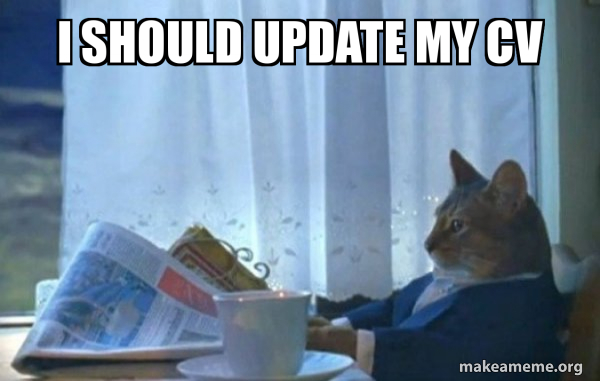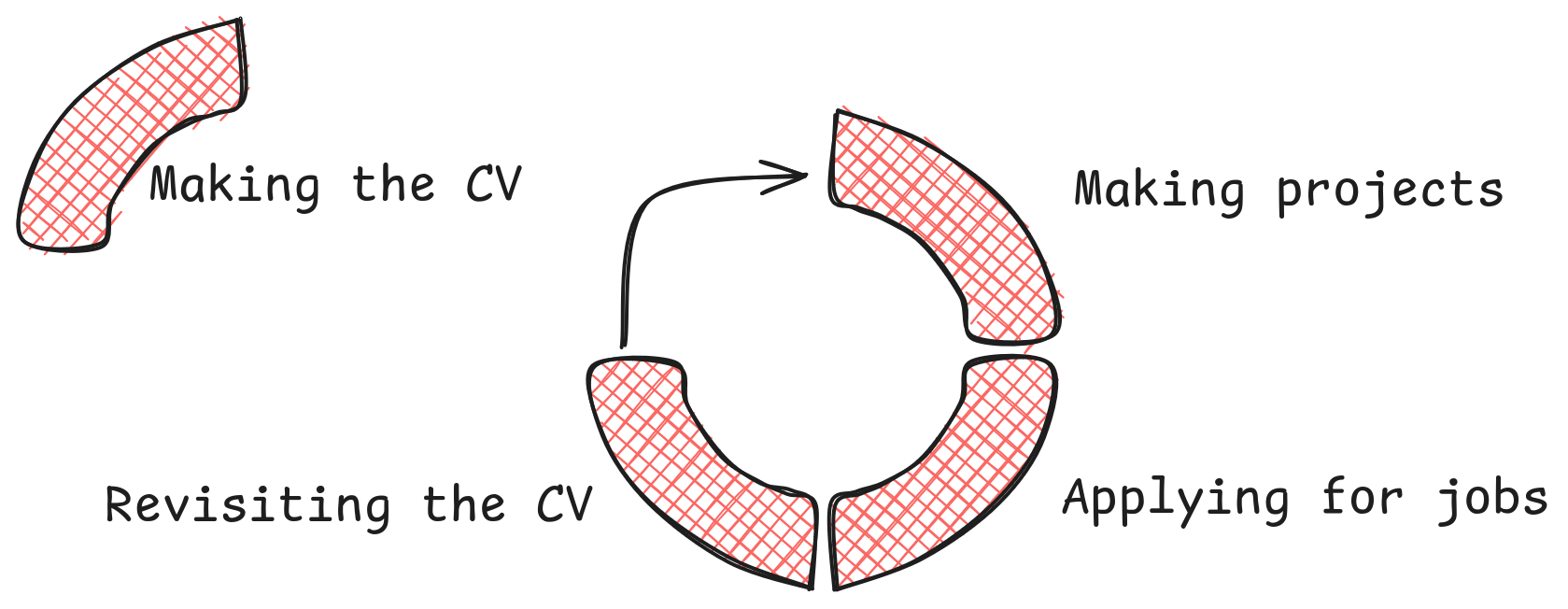Crafting the perfect CV: tips and tricks

Crafting a CV that genuinely reflects your skills and catches a recruiter’s eye can be deceptively challenging. Many people think it’s just a list of job titles and skills, but there’s much more to creating a CV that leaves an impression!
Who are these tips for ?
- A software engineer or tech industry professional
- Looking for a better job and ready to put these tips into action
Tips and Tricks
Your CV is often the first impression you make on a recruiter. It’s not just a summary of your experience; it’s a snapshot of your career journey, achievements, and professional story. The clearer, more focused, and relevant it is, the better it can open doors to exciting opportunities.
Types of bad CVs to avoid!
- The Font Disaster: Using inappropriate or overly decorative fonts (or even strange colors) can make your CV look unprofessional and difficult to read.
- The Typo Nightmare: Typos can make your CV look careless. Use a spellchecker for god sake!
- The Graphics Overload: Elaborate visuals or graphics are typically unnecessary in the tech industry and can distract from the content.
- The Bare Minimum: Writing an overly short CV can leave out critical details. Be concise, but make sure you include all key information.
- The Life Story: Detail is essential, but avoid turning your CV into an autobiography. Stick to relevant experiences and accomplishments to keep it focused and impactful.
Aesthetics
Probably the most imporatant thing about your CV is how it looks, imagine having top-notch skills and impressive experience, but presenting it on a CV with inconsistent fonts, poor formatting, awkward indentations, and typos everywhere. Even if it passes the ATS, it’s likely to be dismissed by a recruiter within seconds if it doesn’t look polished and professional!
Make it compact: One Page CV
I like the rule of One Page CV for 2 reasons:
- Less Writing, More Impact: A concise, well-organized CV lets you focus on highlighting your best achievements without getting bogged down in excessive detail (and yes, as much as I write blogs, I’m not a fan of writing long CVs either!).
- Easier for Recruiters to Review: Keeping your CV to one page forces you to prioritize only the most relevant, impactful points, which recruiters appreciate. A compact CV shows that you respect their time and know how to get to the point quickly (If you have 10+ years maybe you can have more than 1 page)
CV Versioning: one CV to rule them all ?

Don’t settle for a single version of your CV!
Tailoring your CV to each job can make a huge difference. Create multiple versions that highlight different skills or experiences relevant to specific roles.
And if you’re tech-savvy, you can use git to manage your versions for easy tracking!
$ cd CVs
├── sw_02012024-sharpdev.pdf
├── sw_08062024-wonderland.pdf
├── sw_11122023-blackcat.pdf
├── sw_18042024-summersun.pdf
├── sw_19012024-darknight.pdf
└── template.texShow Your Impact: Numbers Speak Louder
Quantifying your achievements with numbers makes your contributions clear and credible. In your experience section, include metrics that demonstrate the impact you made in previous roles. Here are some examples:
- Doubled processing speed by optimizing server performance, reducing response times by 50%.
- Led the development of XYZ feature, which boosted overall user engagement by 30%.
- Increased customer retention by 20% through improved onboarding workflows.
- Reduced costs by 15% by automating key processes, saving over 100 hours of manual work monthly.
- Enhanced database efficiency by redesigning data structure, increasing query speed by 3x.
Using specific numbers makes your contributions tangible and helps recruiters understand the value you bring.
Projects
The projects section is crucial, especially if you’re light on work experience:
- Write a concise summary for each project, highlighting its purpose and key features.
- Include a link to the project—a live demo is ideal, but a GitHub repository works too.
- List the tech stack used, showing off your skills with specific tools and languages.
- Avoid overly basic projects like a to-do app; focus on projects that demonstrate creativity and depth.
- Clarify your role if it was a team project, specifying your contributions to give insight into your skills and responsibilities.
Education and Certificates

Keep your education and certifications separate, as they serve different purposes on your CV.
- Education: List your degrees, majors, and the institutions you attended, including graduation dates.
- Certificates: Include relevant certifications that demonstrate your expertise and commitment to professional development.
Avoid listing individual courses or irrelevant training programs; focus on credentials that add value and align with the positions you’re targeting. This clarity helps recruiters quickly identify your qualifications. You can list your GPA and the relevant courses if related to the job.
Improvement Cycle
You should establish an improvement cycle for your job search, as continuously refining your CV is key to success:
- Apply for Jobs: Send out your CV to various positions that interest you.
- Get Feedback: After applying, seek feedback from peers, mentors, or recruiters to identify areas for improvement.
- Make Modifications: Use the feedback to make necessary adjustments to your CV and enhance your projects based on your experiences and skills.

Profiles: Beyond The Links
First and foremost, it’s crucial to avoid dead links or URLs in your CV; ensure all links lead to the correct and relevant content.
GitHub
Your GitHub profile should showcase your work with a well-structured README.md for each project, including:
- Project Overview: A brief description of what the project is about.
- Features: Highlight key functionalities and what sets the project apart.
- Demo: Provide links to live demos or screenshots to give a visual representation of the project.
- Installation Instructions: Clear steps on how to run or install the project, making it easy for others to test or contribute.
A professional LinkedIn profile is essential for networking and job searching. Make sure to:
- Complete Your Profile: Fill in all sections, including work experience, education, and skills.
- Engage with Content: Share relevant articles, projects, or insights related to your field to demonstrate your expertise and interests.
- Network Actively: Connect with peers, industry professionals, and recruiters to expand your network and visibility.
Portfolio
Your portfolio should reflect your best projects and skills. Ensure it includes:
- Project Showcase: Highlight a selection of your most impressive work, providing context and demonstrating your abilities.
- Clear Organization: Structure your portfolio so that visitors can easily navigate through different projects and understand your role in each.
- Personal Branding: Use consistent branding and design elements to create a professional look that aligns with your personal style and industry standards.
By optimizing these profiles, you create a cohesive online presence that enhances your CV and increases your chances of making a positive impression on recruiters and potential employers.
General tips
- Choose the Correct Verb Tense: Use past tense for previous roles and present tense for your current position to maintain consistency.
- Proofread for Typos: Double-check your CV for any typos or grammatical errors to ensure professionalism.
- Prioritize Sections Strategically: Place education followed by skills near the top if you’re early in your career. However, if you have significant experience, education can take a lower priority, as your work history will be more relevant.
- Use a professional email: avoid emails with weird names like
dody902@email.com, … etc
Say Hello :D
Sponsor